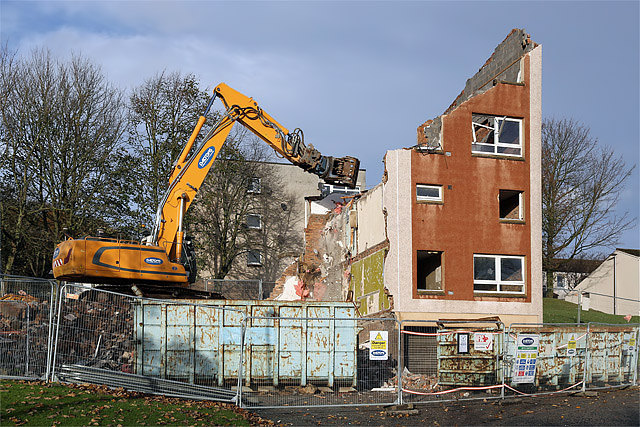Wall demolition is a critical part of renovation and construction projects, whether for redesigning interiors, removing unsafe structures, or creating open spaces. It requires precision, planning, and adherence to safety regulations, especially in dynamic cities like Dubai. Here’s a comprehensive guide to understanding wall demolition and its applications.

Why Opt for Wall Demolition?
1. Interior Redesign
Wall demolition is often needed to reconfigure spaces within a home or office. For instance, creating open-plan designs or combining rooms for a more spacious layout.
2. Removing Unsafe Structures
Over time, walls may weaken due to aging, water damage, or foundational issues. Demolishing these structures ensures safety and prevents future hazards.
3. Expanding Spaces
To accommodate growing needs, walls can be removed to create additional space or integrate adjoining areas seamlessly.
Types of Wall Demolition
1. Non-Load-Bearing Demolition
These walls don’t support the structure’s weight and can be removed without affecting the building’s integrity.
- Common Use: Residential and office renovations to open up spaces.
2. Load-Bearing Demolition
These walls are integral to a building’s support. Their removal requires structural reinforcements such as beams or columns.
- Common Use: Large-scale remodeling projects.
3. Partial Demolition
Only a portion of the wall is removed, such as creating a doorway or window.
- Common Use: Adding functional elements or enhancing natural light.
4. Interior vs. Exterior Wall Demolition
- Interior Walls: Focus on redesigning spaces.
- Exterior Walls: Typically done for structural changes or property expansions.
Steps in Wall Demolition
1. Planning and Permits
Professional evaluation is crucial to determine whether the wall is load-bearing and to obtain the necessary permits, especially in regulated environments like Dubai.
2. Safety Preparations
- Disconnect utilities (electricity, plumbing, etc.) in the wall area.
- Clear the surrounding area to minimize risk to workers and occupants.
3. Structural Assessment
Load-bearing walls require structural reinforcements before demolition begins to maintain the building’s integrity.
4. Demolition Execution
- Non-load-bearing walls: Removed using hand tools or machinery.
- Load-bearing walls: Carefully dismantled with the support of temporary structures.
5. Cleanup and Debris Disposal
Debris is collected and disposed of following environmental regulations, and the area is prepped for the next phase of construction or renovation.
Cost Factors in Wall Demolition
Several elements impact the cost of wall demolition:
- Wall Type: Load-bearing walls are more expensive to remove due to the need for reinforcements.
- Material: Concrete and brick walls cost more to demolish than drywall.
- Accessibility: Walls in hard-to-reach areas require more labor and equipment.
- Waste Disposal: Fees for debris removal and disposal affect the overall price.
Safety Considerations
1. Proper Equipment
Using the right tools, such as hammers, saws, or demolition machinery, ensures safe and efficient removal.
2. Professional Expertise
Hiring experienced contractors prevents accidents and structural damage.
3. Environmental Compliance
Debris, especially hazardous materials, must be handled and disposed of in accordance with local regulations.
Benefits of Professional Wall Demolition Services
1. Efficiency
Professional contractors use advanced tools and techniques to complete projects quickly.
2. Safety Assurance
Experienced teams minimize risks during demolition, ensuring the safety of workers and surrounding areas.
3. Compliance with Regulations
In places like Dubai, adherence to municipal guidelines is mandatory. Licensed contractors streamline this process.
4. High-Quality Results
Professionals ensure precision in wall removal, leaving the area ready for subsequent construction or renovation.
Common Challenges in Wall Demolition
1. Identifying Wall Types
Misidentifying a load-bearing wall can lead to structural damage. Always consult professionals for accurate assessments.
2. Managing Debris
Efficient disposal of demolition waste is essential for maintaining cleanliness and adhering to regulations.
3. Working in Occupied Spaces
Demolition in active environments requires careful scheduling to minimize disruption.
Choosing the Right Wall Demolition Contractor
To ensure a successful demolition project, consider:
- Experience: Contractors with a proven track record in wall demolition.
- Licensing: Verify they are certified to operate in your region.
- Customer Reviews: Check testimonials to gauge reliability and service quality.
Conclusion
Wall demolition is more than just tearing down structures; it’s about transforming spaces safely and efficiently. Whether you’re planning a home renovation, expanding an office, or redesigning interiors, professional wall demolition services in Dubai ensure precision, safety, and compliance with local regulations.
By understanding the process and hiring the right experts, you can seamlessly integrate wall demolition into your project, achieving the desired results with minimal hassle.
4o
